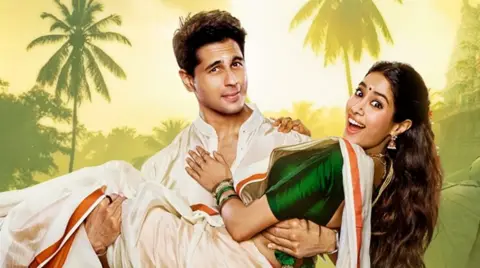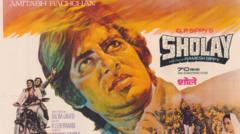Sahil Arora, 20, had been eagerly waiting to watch the latest Bollywood release starring his favourite actor. But going to the theatre set him back considerably - a seat at a Delhi multiplex cost 500 rupees ($6; £4), nearly a third of his weekly pocket money.
I enjoyed the movie, but the price was a sore point, he said. Popcorn was another 500 rupees, so I skipped it. He’s not alone. Rising ticket and snack prices mean moviegoers are cutting down on their trips to cinema and moving towards cheaper streaming options.
Harsh Verma, 38, looks back on a time when going to the movies didn’t feel like a luxury. Some 15 years ago, my friends and I would go and watch every new release, sometimes every week. That has now become impossible. In the past five years, data shows that the average cost of a film ticket in India has risen by 47%.
The Average Ticket Price (ATP) in 2020 was 91 rupees, while in 2024 it rose to 134, according to audience research firm Ormax media. However, between 2023 and 2024 there was only a 3% rise in the ATP - suggesting that the prices have stabilised. The report adds that footfall in Indian cinemas has reduced by 6% in 2024 as compared to 2023, continuing a trend in recent years.
One of the main reasons why going to movies has become expensive is because single-screen theatres that offered cheaper tickets have now been mostly replaced by plush multi-screen cinemas that offer a host of amenities. But multiplex owners argue that ticket prices are reasonable and that audiences continue to visit in large numbers.
Sanjeev Kumar Bijli, executive director of multiplex chain PVR INOX Limited which owns more than 1,500 screens across India, told the BBC that the perception that people have stopped going to theatres is a general notion squeezed in without fact-checking. He says his chain has recorded a footfall of 151 million in 2024, up from 140 million in 2023.
Mr Bijli acknowledges receiving some feedback about high ticket prices, but says that audiences continue to turn up because they get value for money. People walk out after three hours feeling satisfied, they’ve enjoyed themselves in air-conditioned comfort, with superior sound and an immersive experience. He states that flexible pricing and weekday offers help attract audiences, with tickets costing only 92 rupees on Tuesdays.
However, some Indian states have placed a cap on ticket prices, prompting debates. Mr Bijli argues that price caps don’t help them, as steady revenue is vital to maintain and upgrade facilities. Film critic Komal Nahta believes that while lower prices could attract more audiences, owners must retain the freedom to keep their businesses profitable.
Even though single screens offer cheaper tickets, many urban middle-class audiences no longer choose them due to lack of comfort and amenities. It’s a vicious cycle, says Nahta, pointing out that low footfalls lead to poor maintenance, driving away viewers. In Delhi, only a handful of single screens still stand.
Experts warn theatres face competition from the booming streaming sector that surged during the pandemic. Monthly subscriptions to streaming platforms are cheaper than movie tickets, making it a more appealing option for families.
Despite these challenges, Mr Bijli insists that cinema is returning to life as audience behavior shifts back towards in-person viewing after the pandemic. Cinema has faced challenges from TV, VHS and DVDs. Every time a new medium emerged, people wrote off cinema, but it survived. It offers an immersive, uninterrupted experience that you simply can't get at home.


















